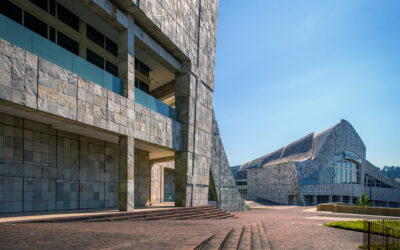The Faculty of Medicine of the University of Santiago de Compostela hosts a small monographic exhibition dedicated to the old instruments used in the medical specialty of anesthesiology.
Specifically, it can be visited on the mezzanine floor of this historic building, which is located in a very accessible area of high tourist affluence due to its proximity to some of the most valuable heritage assets of the city, such as the Cathedral of Santiago or the Monastery of San Francisco.
The construction project for the Faculty was promoted between 1910 and 1928 by the architects F. Arbós y Tremanti and Isidro de Benito.
Thus, the building consists of granite masonry walls and is characterized by following the patterns of nineteenth-century eclecticism, an architectural and decorative trend that seeks to capture the aesthetic elements and the distribution of the various styles that predominated in the nineteenth century.
It is, together with the Faculty of Geography and History, one of the most important pieces of the academic institution of Compostela and a unique work in the entire Galician University System.
The main facade has two floors divided by a cornice. In it, the central body with double portico and the two end masses stand out.
In addition to being the nerve center for the training of Galician physicians, a task that Santiago has assumed since 1648, the institution has a unique Collection of Anesthesiology and Resuscitation.
The exhibition includes pieces of anesthetic, surgical and resuscitation medical instruments used throughout history, as well as engravings and photographs. These elements have a special relevance, given that the Compostelan School of Medicine was a pioneer in the administration of anesthetics in Spain.
The collection was expanded thanks to donations from Galician doctors related to other specialties, as well as pharmaceuticals, film material and images of prominent figures in the sector.






